Harris | Warren James
- First names
Warren James
- Age
22
- Date of birth
03-10-1922
- Date of death
07-10-1944
- Service number
18005024
- Rank
Private
- Regiment
Lincolnshire Regiment, 2nd Bn.
- Grave number
I. D. 3.

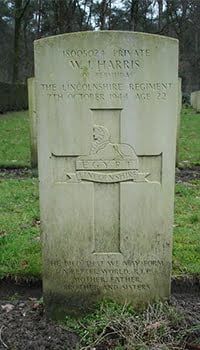
Biography
Warren Harris was killed in action on 7 October 1944 in the vicinity of the ferry house (Het Veerhuis) in Oeffelt. He was aged 22 at the time. He came from Bermuda and was a Private in the 2nd Battalion of the Lincolnshire Regiment (Service No. 18005024). He was initially buried at the village square in Haps and re-interred on 18 July 1946 in grave I. D. 3 in the Overloon CWGC Cemetery. The inscription on his grave reads “He died that we may form a better world. R.I.P. Mother, father, brother and sisters”.
Family background
Warren was the son of Willis Graham Harris and Rosalie Irene Harris from Euclid Ave. Pembroke, Bermuda. Warren had 2 sisters, Beatrice Harris, married to Frederick Wall and Muriel Harris. He also had a brother, E.G. “Dick” Harris, probably called Edward G. “Dick” Harris.
Royal Gazette article from 1990’s
“Beatrice Harris Wall was a 13-year-old girl in early May 1944, when she walked down to the docks at Front Street with her mother and father to wave her brother Warren off to war. She has come home from Canada for a visit and wanted to be able to take part in the Remembrance Day service to pay her respects to her brother and all of the others who lost their lives in the wars, but a heavy cold kept her at home yesterday morning.
“I was the youngest of four children, all born in Pembroke,” reminisced Mrs. Wall. “Warren was the second son, and he and I were very close growing up, and I missed him dreadfully when he went overseas, of course.”I remember seeing Warren off down by the steps on the dock, where the row boats used to go to White’s Island. They got on tenders to go out to the ship. There were other people there, but it was early in the morning, and it was not some noisy flag-waving scene.”It was very subdued. I was a young girl, and children don’t take these things as seriously as they should. It seemed like a great adventure to him, and I was too young to understand that I might never see him again.”
Jennifer Ingham Hind, in her book “Defence not Defiance, a history of the Bermuda Volunteer Rifle Corps (BVRC), described the scene on Front Street that May morning, just over 60 years ago. “The contingent embarked on tenders at Hamilton on the morning of May 7, 1944. As the hour was early and all movements kept successfully secret, there were only the usual early morning workers to witness their departure. They sailed on a US troopship to Fort Hamilton, Brooklyn, where they stayed about six days before embarking on the transatlantic voyage to Liverpool.”
The Bermuda contingent knew before they left that they would be discharged from the BVRC and enlisted in the Lincolnshire Regiment on arrival in England, with a consequent loss of rank and seniority, and a sizable reduction in pay and allowances, but they went in spite of that. On arrival in England, many men transferred to other branches of the armed forces, including 11 who volunteered for the Parachute regiment. Warren Harris and his comrades were still wearing their BVRC uniform and cap badge, although they were later issued British army uniforms, and the only mark that distinguished them as Bermudians was the “flash” on their shoulders.
“He volunteered, and mother was furious, because he did it on a bet, on a dare. He was only 21 when he left in April 1944, and was 22 and three days when he was killed. From what I was told, they were very short of men at that time in Holland, and normally they did not send them out on the first day they arrived there, but they did send him. I can’t remember when the news reached us, but we were all devastated, my mother especially. It was during the school year, I remember that clearly, because we lived on Euclid Avenue beside Saltus Grammar School, and they always had the students marching with their drums, and the noise bothered my mother so much, we called the school and they stopped it.
“After he was killed, the Government sent my parents some money, I don’t know how much, because parents didn’t tell teenage girls that sort of thing, but my mother wouldn’t touch it; she called it ‘blood money’. “In St. John’s Church by the Ladies’ Chapel, there’s a plaque on the wall commemorating Warren’s death, and mother sent that money to England, plus a bit more, to have that marble plaque put up. To my knowledge, it is still there. She tried to have his body brought back from Holland, but they wouldn’t allow it. For a number of years after the war, my mother was in touch with a Dutch boy. When they got to a certain grade in school, they were given the responsibility of looking after a number of graves, and he looked after Warren’s. My mother has been dead 48 years, but I know it gave her comfort to know his grave was being looked after.” (Warren Harris’ grave is cared for immaculately, and will be in perpetuity, by the Commonwealth War Graves Commission, which is responsible for the graves of all of the Allied forces who fell in the wars.)
“My eldest brother ‘Dick’ Harris, E.G. Harris who worked at Weldon House, he died a couple of years ago, and my sister Muriel has been deceased since 1969, but I was always closest to Warren.” Ted’s son Warren works at Argus, and Craig is with Cable & Wireless, and my own children are in Canada. I married Freddie Wall, who was a very good footballer in those days, and our children were born here, but we moved to Barry, Ontario in 1956. Freddie died 12 years ago.”
It was Freddie Wall’s late brother George, one of the BVRC contingent with the Lincolnshire Regiment in Holland, whose memory of the campaign was reported by Jennifer Ingham Hind.
“On October 14,1944, the Third British Division freed Overloon from the clutches of Nazi Germany. Following the dropping of the Allied paratroopers at Arnhem-Nijmegen in September, Allied Command observed heavy German troop movement in the Venlo area. It was the intention of the Germans to push forward on a line parallel with S’Hertogenbosch, sealing off any attempt of a retreat by the airborne armada.”To counter this movement, the Allies moved up the Seventh American Armoured Division, along with the Eleventh British Armoured and the Third British Infantry Division . . . in which there was a Lincoln Battalion in which several Bermudians were killed.”
“Among the casualties was Warren Harris, who was killed while on a ‘feeler’ patrol. John DeSilva, Willard Patterson, Anthony (Toby) Smith, and Richard White were all killed when making a frontal battalion attack on a heavily defended wood. Several others were injured during this attack, and Stuart Moniz sustained wounds from which he died almost four years later. Jay Stephenson was killed one month later on patrol.”
“Others fell at Winnekendonk in Germany on March 1, 1945, during a two-company attack. D Company was led by Major Peter Clark, MC, and Major Glyn Gilbert, MC (the late Major-General Gilbert, who died last year) led C Company. The village was heavily defended by the Germans, and it was like taking lambs to the slaughter. The ratio of casualties was higher than at Overloon, and included Edward Hennessay and Francis Monkman.”
Tragical message
On october 19th 1944, The parents of private Warren James Harris received an unofficial message that their son could be killed on october 7th, during a fighting patrol at the Veerhuis in Oeffelt, in the neighbourhood of Haps.
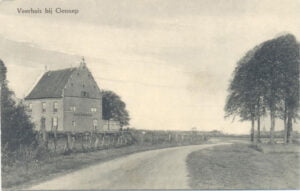
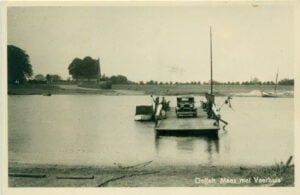
Due to the long distance and difficult communication between Bermuda and the battlefield in Overloon, it took till november 10th for Lt-col. Astwood, officer of the Bermuda Volunteer Rifle Corps was able to sent an offical letter to confirm the loss of Warren James Harris.
In the attached letter Lt. Smith wrote : “I was with private Harris when this youngman was killed.” We were on a fighting patrol together.” Private Harris had been with the Regiment for a short while an was the first Bermudian “to get it”. It happened so fast that he didn’t suffer.”We were all very sad he was killed while he was such a short period with us.”
Private Warren James Harris was temporary buried in the center of Haps. Smith: “He has a nice little grave with bricks and flowers and a cross showing his number, rank, name, regiment and the date killed..”
In 1946 private Warren James Harris was reburied at Overloon War Cemetery next to the three other military who were temporarily buried in Haps.
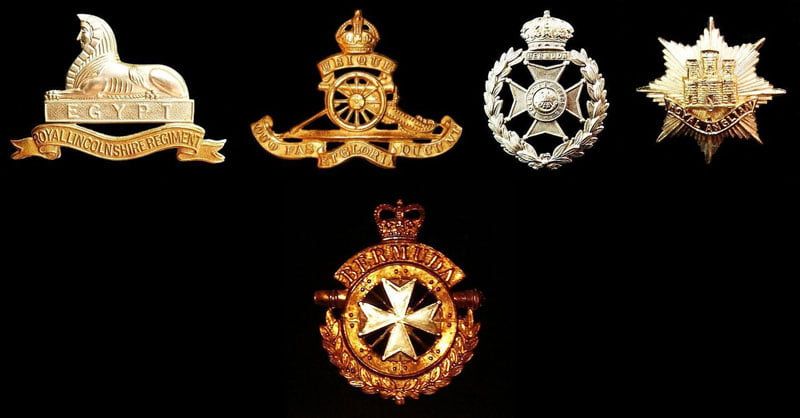
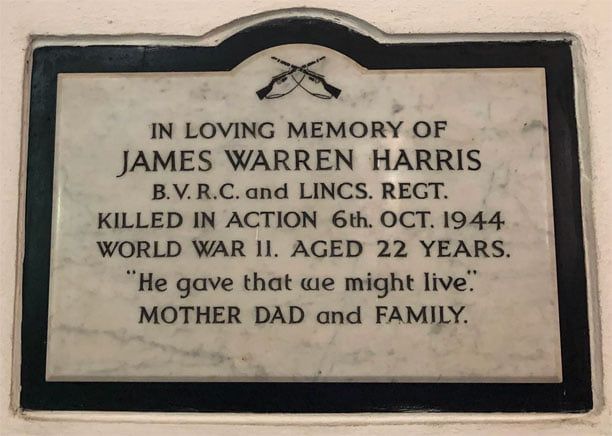

Military background
Warren Harris joined the Bermuda Volunteer Rifle Corps (BVRC) in Bermuda and left the island in May 1944. He was enlisted to the 2n Bn Lincolnshire Regiment after arriving in England.
The 2nd Bn Lincolnshires took part in the D-Day landings in June 1944 and was then engaged throughout the Normandy Campaign, taking part in Operation Charnwood and Operation Goodwood.
They remained in Normandy until 15 September. They then took part in the push up through Belgium and the Netherlands with the aim of supporting the airborne troops engaged in Operation Market Garden which ultimately did not fully succeed following the failure to take the bridge at Arnhem in late September.
On 16 and 17 September the Battalion moved into Belgium near Mons. They found that the civil population were very enthusiastic, particularly in the area of the Belgian frontier. They then joined in the effort to cross the Escaut Canal where all the bridges had been blown by the enemy. They succeeded with other regiments in this difficult task in the face of opposition and a bridge was complete by 19 September. The Battalion moved on to Achel on 20 September where all ranks were able to get a night’s sleep under cover and then Hamont the following day where they remained until 25 September while the 11 Armoured Division took Deurne in the Netherlands. The Battalion moved to Deurne that day and took over from the 11 Armoured Division with the 2nd Battalion Royal Ulster Rifles. They remained in this area, sometimes engaging with the enemy who were on the east side of a canal. On 29 September they moved north to Milheeze and then Haps on 1 October.
The base of the 2nd Lincolnshire Regiment stayed in Haps from the 1st till the 12th of October. From there, attempts were made to clear the west side of the Meuse between Cuijk and Oeffelt. This was done together with 2nd Bn Royal Ulster Rifles, the 1st Bn King’s Own Scottish Borderers and 3rd Reconnaisance Regiment (9th Brigade 3rd Infantry Division).
On the east side of the Meuse, resistance remained strong, particularly in Middelaar, Milsbeek, and Gennep. The stone factory in Milsbeek served as the main center of opposition, as its tall chimney functioned as an observation post from which German artillery coordinated the defense. On the east side of the river, the enemy was also attacked from Plasmolen.
Between 1 and 7 October, the Ferry House in Oeffelt — Het Veerhuis — was repeatedly occupied by the enemy and then retaken by British forces. Patrols of the 2nd Lincolnshire Regiment discovered that the Ferry House had once again fallen into German hands. Despite heavy British artillery bombardments, German troops continued to appear around the stone factory in Milsbeek.
On 4 and 5 October, the chimney of the Milsbeek factory was finally brought down, and the church in Middelaar was reduced to rubble. On 6 October, the 2nd Lincolnshire Regiment launched another attack on the Ferry House — this time successfully. After intense shell fire, the first scouts found only an empty ruin. Despite the destruction, the remains of the building still stood firm.
On the 7th of October a patrol of the 2nd Lincolnshires reached the Ferry House and it was again occupied by the enemy. They resisted and opened fire on the patrol with rifles and machine guns. According to the war diary that day, one person was killed in the crash which sadly was Warren James Harris.
He was buried in the village square in Haps. Three other British soldiers were also buried there in October 1944. They were comrades Francis Charles Cannings, and Wilfred Rigby, both from the 2nd Bn Lincolnshire Regiment and Jack Arthur Maddock Longhurst from the 7th Hampshire Regiment. The graves of these soldiers were lovingly tended by the inhabitants of the village of Haps and flowers were regularly laid there.
All four were buried side by side at Overloon War Cemetery on 18 July 1946.

Sources and credits
Bermudan papers of 1944 by Seán Pòl Ó Creachmhaoil, Bermuda (former corporal of the Bermuda Regiment, 1992 to 1997)
Jennifer Ingham Hind, “Defence not Defiance, a history of the Bermuda Volunteer Rifle Corps (BVRC)
Government of Bermuda, London Office: Bermudas contribution to the second world war
War Diaries 2nd Bn Lincolnshire Regiment
Piet Peters for background information
Research Oscar Huisman, Anny Huberts
